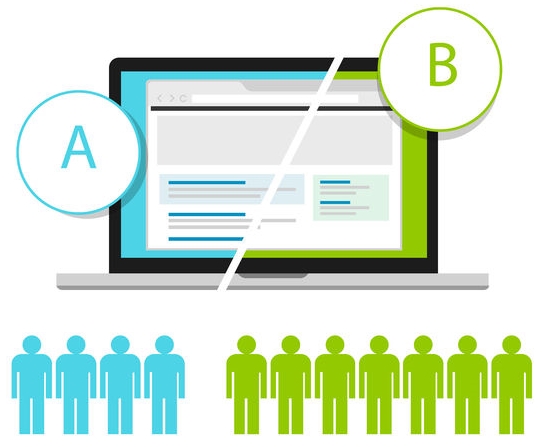Decision time: you’re crafting a new marketing email, and you’re down to one last detail. The content is rock solid, but it needs the right visual to really make it stand out. You’ve got two good choices, and you just can’t decide which one will resonate better with your audience. What do you do? This is a prime opportunity for A/B testing!
To conduct an A/B test, go ahead and prepare both versions of your email. Randomly divide your audience and send the email with Image A to half of them. Send Image B to the other half. See which one performs better, and use those results to inform future decisions.
A/B testing is a simple process that can yield big results. Anything can be tested, from the content on your website landing page to the call to action in an email to the discount you give early bird purchasers.
Here are a few ideas to get you started.
First, decide what you want to test. The possibilities are pretty much endless. If you’re looking to test something on your site, you might think about the following:
- Page layout
- Fonts, text size, and color
- Call to action (what it says and where it appears)
- Location, size, and color of buttons
- Images, including how many there are, where they are on the page, what they show
- What percentage of the page is text vs. graphics
- Your website content
You can also perform A/B tests on external marketing materials, such as ads you run or emails you send out. You can test many of the same factors listed above (fonts, images, call to action). You can also test email subject line or the time of day you send the email or post a Facebook ad.
Finally, if you’re offering a discount, you might perform an A/B test on the type of discount. Does your audience respond better to getting a percentage off their purchase or a flat dollar amount? Would they rather have free shipping or get a bonus product free?
You don’t want to test too many things at once.
If Website A has both a different image and a different CTA from Website B, you won’t know which factor is responsible for the difference in performance. (There is a more advanced type of test called a multivariate test, but we’re keeping it simple for now.) And you don’t necessarily have to do a ton of work — something as small as the email subject line can give you important insights.
While setting up an A/B test can be quick and easy, don’t rush the results. If you don’t give the campaign enough time, you won’t have a large enough sample size to ensure accuracy. Be wary of letting things go for too long, however, as that allows results to be skewed by outside factors. Somewhere between a couple of days to a few weeks is ideal, depending on what you’re testing.
Knowing what your audience wants is the key to success for your business. A/B testing is one of the simplest ways to understand what’s driving them. Once you learn that you can double your conversion rate by using Image A over Image B, you’ll wonder how you ever lived without it!

